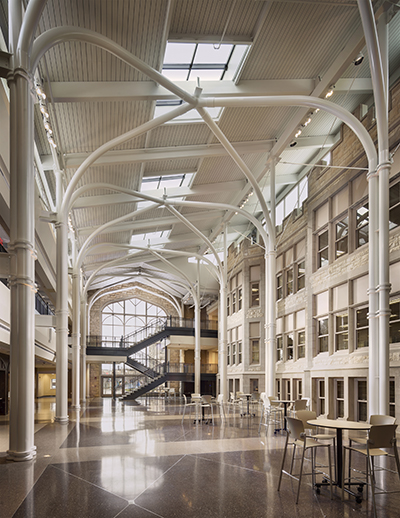 Joliet Central High School boasts quite the early 20th century architectural pedigree. Completed in 1901 and now called Joliet Township High School, the building was designed by a prominent architect of the time, Frank Shaver Allen, and employed Daniel H. Burnham Company as the architect for a subsequent major addition. Located in downtown Joliet, Ill., it is listed on the National Register of Historic Places.
Joliet Central High School boasts quite the early 20th century architectural pedigree. Completed in 1901 and now called Joliet Township High School, the building was designed by a prominent architect of the time, Frank Shaver Allen, and employed Daniel H. Burnham Company as the architect for a subsequent major addition. Located in downtown Joliet, Ill., it is listed on the National Register of Historic Places.
The exterior façade of the building was designed in the Collegiate Gothic style using Joliet limestone and Bedford stone trim material. The building features arched entrance doors and an elaborate interior with plaster relief panels, marble wainscoting and decorative cast iron staircases. Interior features and materials consistently portray the Gothic arch motif.
Now, more than a century after it was built, it has undergone another, 43,000-sq.-ft addition. Designed by Wight & Company (Wight), the new structure features a three-story glass curtain wall façade that leads into a bright and inviting student center atrium. Beyond that is a spacious, open-plan dining pavilion, also steel-framed, that can seat up to 600 people for events. The focal point of the addition is a soaring structure of hollow structural sections (HSS) that defines a collaborative space for the school’s 2,600 students, where they can study, socialize and access student services.
The design team envisioned a space that would serve as the heart of the school, connecting the new with the old. The new atrium references elements of this landmark building’s original style but interprets it in a modern way that takes advantage of structural steel to create a wide-open, bright, airy space. The design, which required approval from the state government due to the building’s historic designation, incorporates a limestone wall of the existing school, treating it as artwork on the interior of the new structure.
For more about the project, see the article “Living History” in our June issue (available now!).